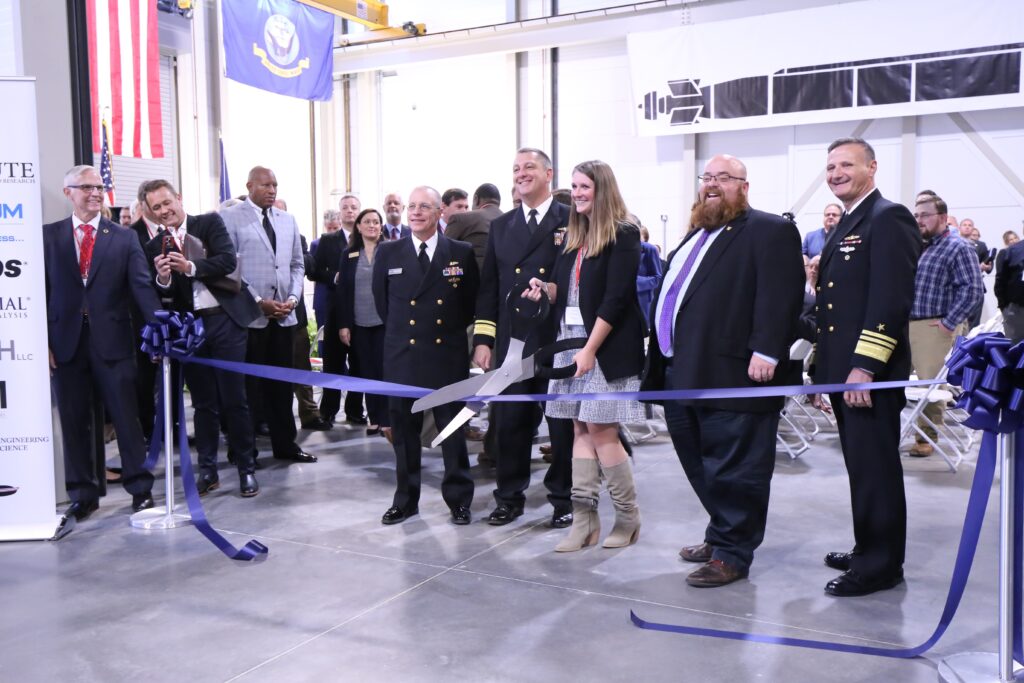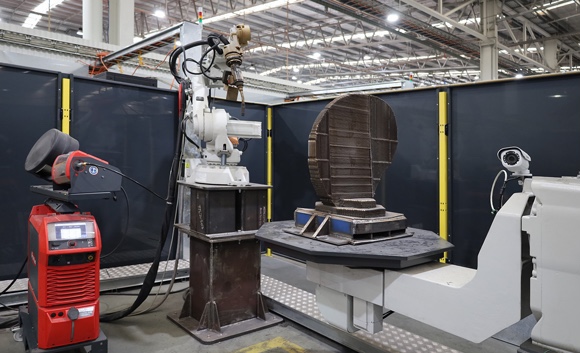AML3D, an Australian original equipment manufacturer (OEM) that produces large-scale additive manufacturing (AM) systems, announced that the company has sold its second ARCEMY X-Edition to the U.S. Navy. Additionally, the European Patent Office has granted AML3D a patent for its wire additive manufacturing (WAM) process, which, according to the company, makes it the only AM company with a European process patent.
AML3D expects the ARCEMY X-Edition 6700 — the firm’s largest platform, which is valued at around $770,000 — to be installed at the US Navy AM Center of Excellence (CoE), in Danville, VA, in early 2024. The deal for the first ARCEMY X-Edition 6700 was originally announced in February, 2023, and that unit was recently installed at Oak Ridge National Laboratory (ORNL) in Knoxville, TN, for research into its use for the U.S. Navy submarine program.
AML3D’s European patent follows the company’s Australian patent that was granted in June, 2021, and reinforces AML3D’s transition from contract manufacturer to OEM that it began in the second half of 2022. While the cornerstone of the company’s OEM strategy is the U.S. defense market, it could certainly realize many benefits from a patent in the European market going forward, given the significance to the U.S. military supply chain of sales to NATO countries as well as NATO’s allies and partners.

In a press release about the sale of the second ARCEMY X-Edition 6700 to the US Navy, AML3D’s interim CEO, Sean Ebert, said, “Our collaboration with [reseller] Phillips Corp has been invaluable in expanding our presence in the US market and securing this order. We continue to actively engage with our partners to further depend our presence in the US defense and federal sectors, which will drive further growth in sales into that sector.”
In a press release about the company’s European patent, Ebert said, “The market demand for advanced wire feedstock [AM], that can address supply chain risk, deliver time and cost savings and better ESG outcomes continues to accelerate. This additional international process patent protection will further strengthen our position in a significant and growing addressable market.”

As I described in my interview with Ebert that was published in June, AML3D made two extremely astute moves in (1) transitioning to an OEM strategy based on targeting the US defense market and (2) specifically focusing on submarines as the linchpin of that strategy. Australia is an especially fruitful home-base for cultivating that strategy: not long after AML3D sold its first ARCEMY system to the U.S. Navy in February, the Biden administration announced an Australia-UK-US (AUKUS) trilateral partnership surrounding the production of nuclear-powered submarines.
In the White House Fact Sheet announcing the AUKUS partnership, it stated, “Australia’s future nuclear-powered submarine [SSN] capability — which we are calling SSN-AUKUS — will be a state-of-the-art platform designed to leverage the best of submarine technology from all three nations. SSN-AUKUS will be based upon the United Kingdom’s next-generation SSN design while incorporating cutting edge US submarine technologies, and will be built and deployed by both Australia and the United Kingdom.”
In other words, the “U.S.” submarine program is not a U.S. program, but an AUKUS program, meaning that the ties between all three countries involved will only intensify going forward. While initially, this of course primarily benefits the U.S. — it wouldn’t be happening if it didn’t — the U.K. and Australia may benefit the most in the long run, and the sheer growth potential for Australia in particular suggests that it could ultimately see the most upside from the partnership. In any case, the fact that the U.S. needs to build up the defense industrial base faster than domestically-available infrastructure can support means that incorporation of the production capacity of allies and partners into the U.S. economy should continue to accelerate indefinitely.
Unless otherwise noted, images courtesy of AML3D
Subscribe to Our Email Newsletter
Stay up-to-date on all the latest news from the 3D printing industry and receive information and offers from third party vendors.
You May Also Like
Further Understanding of 3D Printing Design at ADDITIV Design World
ADDITIV is back once again! This time, the virtual platform for additive manufacturing will be holding the first-ever edition of ADDITIV Design World on May 23rd from 9:00 AM –...
3D Printer Maker EVO-tech Reborn as NEVO3D — Once More With Feeling
EVO-tech was a 3D printing service and original equipment manufacturer established in 2013 and based in Schörfling am Attersee, Austria. The company produced high-quality material extrusion systems featuring linear bearings,...
3D Systems Brings 3D Printed PEEK Cranial Implant to the U.S. with FDA Clearance
For more than 10 years, 3D Systems (NYSE:DDD) has worked hand-in-hand with surgeons to plan over 150,000 patient-specific cases, and develop more than two million instruments and implants from its...
CDFAM Returns to Berlin for Second Annual Symposium
The second CDFAM Computational Design Symposium is scheduled for May 7-8, 2024, in Berlin, and will convene leading experts in computational design across all scales. Building upon the first event...































